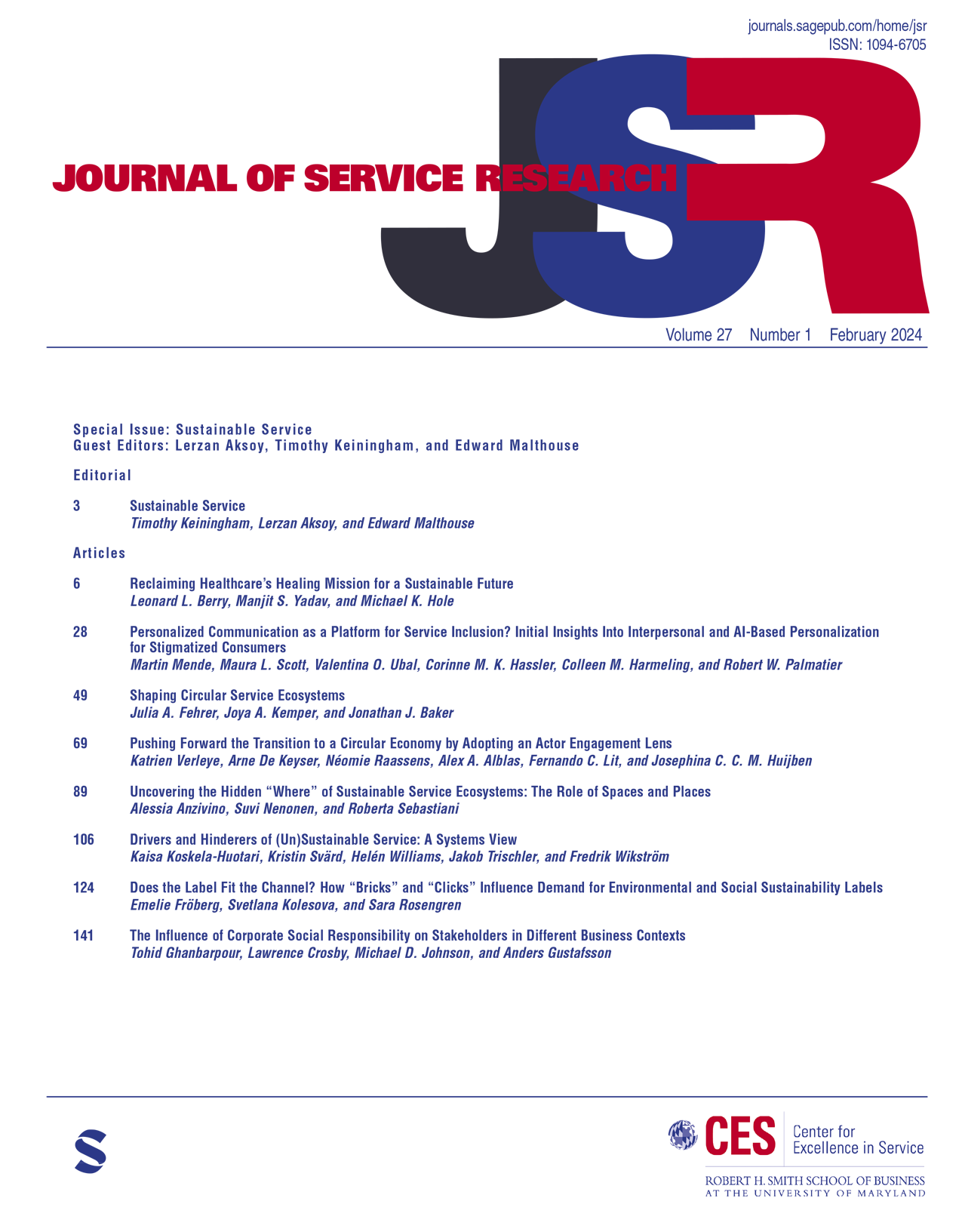回复:从何处开始重塑医疗保健服务中的沟通
IF 8.6
2区 管理学
Q1 BUSINESS
引用次数: 0
摘要
任何沟通行为都涉及决策:该说什么,怎么说,该省略什么。我们在撰写“改善临床医生与患者的沟通方式:一个综合回顾和框架”时,最大的决定是关注临床医生的沟通,而不是同等关注患者的沟通。可以肯定的是,正如我们的文章所讨论的,患者共同创造了医疗保健服务体验,包括其通信。然而,我们看到我们最大的潜在价值在于帮助临床医生设想如何改善他们自己的沟通:语言,非语言和倾听。我们文章的图2展示了临床医生和患者交流之间的动态相互作用,这是一个具有进一步学术研究潜力的二元关系。这两方面都值得进行更多的研究,而服务研究人员在这方面处于领先地位。约瑟夫·雅各布森、乔纳·伯杰和格兰特·帕卡德的评论丰富了我们论文的内容,我们非常重视他们对评论的关心和思考。作为一名经验丰富的肿瘤学家,雅各布森在与患者和家属分享坏消息时经历了许多情绪激动、困难的对话。令人欣慰的是,我们的文章引起了他的共鸣。营销学教授伯杰和帕卡德是领先的传播学研究人员,他们对未来的工作提出了极好的建议,我们对他们的肯定言论表示赞赏。为了扩展对话框,我们现在回复这两个注释。本文章由计算机程序翻译,如有差异,请以英文原文为准。
In Reply: Where Reshaping Communications in Healthcare Service Begins
Any act of communication involves decision-making: what to say, how to say it, what to omit. Our biggest decision in writing “Improving How Clinicians Communicate with Patients: An Integrative Review and Framework” was to focus on the communication of clinicians rather than giving equal attention to patients’ communication. To be sure, patients co-create the healthcare service experience, including its communications, as our article discusses. However, we saw our greatest potential value in helping clinicians envision how they can improve their own communications: verbal, nonverbal, and listening. Our article’s Figure 2 presents the dynamic interplay between clinician and patient communication, a dyad rich with potential for further academic research. Both sides of that dyad merit much more study, and service researchers are well positioned to lead the way. The commentaries by Joseph Jacobson and by Jonah Berger and Grant Packard enrich the content of our paper, and we greatly value their care and thought in responding to it. An experienced medical oncologist, Jacobson has had many emotional, difficult conversations in sharing bad news with patients and family members. It is gratifying that our article resonated with him. Marketing professors Berger and Packard, leading communications researchers, offer excellent suggestions for future work, and we appreciate their affirmative remarks. To extend the dialog, we now reply to those two commentaries.
求助全文
通过发布文献求助,成功后即可免费获取论文全文。
去求助
来源期刊

Journal of Service Research
BUSINESS-
CiteScore
20.30
自引率
6.50%
发文量
28
期刊介绍:
The Journal of Service Research (JSR) is recognized as the foremost service research journal globally. It is an indispensable resource for staying updated on the latest advancements in service research. With its accessible and applicable approach, JSR equips readers with the essential knowledge and strategies needed to navigate an increasingly service-oriented economy. Brimming with contributions from esteemed service professionals and scholars, JSR presents a wealth of articles that offer invaluable insights from academia and industry alike.
 求助内容:
求助内容: 应助结果提醒方式:
应助结果提醒方式:


